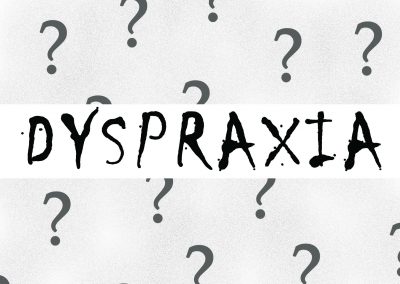Why Singapore’s English Teachers Should Embrace Singlish, Not Fight It
Is it time for Singaporean educators to embrace Singlish as a legitimate learning tool? What the Research […]
Read More
Contributed by Mrs JK, a mother of a child diagnosed with dyspraxia, for SingTeach Issue 60.

My son J (not real name to protect the child’s identity) was only in Primary 4 when he was diagnosed with dyspraxia.
“What is that?” you may ask. While many tend to confuse this diagnosis with Attention Deficit Hyperactivity Disorder (ADHD) or Attention Deficit Disorder (ADD), dyspraxia is actually also known as the “clumsy child syndrome”.
So what does that mean, and how is that going to affect his learning and life as a whole?
Dyspraxia is a form of developmental coordination disorder that causes the individual to have difficulties integrating spatial and visual information.
In the case of J, he has difficulty keeping his school worksheets in its pristine form as when he originally received them during lessons. He also struggles in writing neatly, differentiating one stroke from the other when writing Chinese characters, and even catching a ball during a game.
Some of his teachers also prophesize that mathematics will be hard for him to learn and comprehension will practically be impossible for him to pick up. Little did they know that J, despite his diagnosis, can actually lead a “normal” life just like his other mainstream counterparts when provided with appropriate support structure.
Fast forward 12 years later, J had gone against all odds and prophesy to achieve 250 points for PSLE (A* for English and Science, and A for Math), L1R5 of 7 points for O-Level, and 6 As and 1 B for A-Level. Today, he is enrolled in a local university to do a double degree.
J is a success story that his occupational therapist would repeat over and over again to his clients. So, what had helped him achieve academically?
It is a combination of efforts from his school teachers, occupational therapist, psychologist, tutors and himself, and opportunities to find and realize his potential.
The following are three key factors that helped J thrive in school: structure, equal opportunities, and interventions and trust.
Structures
Structures were put in place to help him cope with his difficulty in organizing and structuring – a common problem among children with dyspraxia.
During a psychology test, it was found that J had an IQ (intelligent quotient) that is very close to that of a gifted child despite his unfavourable routine skills test score. His psychologist suggested tapping on his intelligence to overcome his lack of motor skills to help him academically.
For English Language, he went to a private tutor to learn phonetics; that helped him to spell. He was taught language and genre structure which helped him to analyse comprehension passages, write composition and do cloze passages. For Math, he did his sums in square-lined papers that allowed him to organize numbers better. For Science, he was introduced to a structure that helped him organize written explanations better. At the secondary and junior college (JC) levels, he was given permission to use the computers for all his lessons, which helped him to overcome his problem of slow and illegible handwriting.
Equal Opportunities
At the same time, J was also presented with equal opportunities as his peers, which helped him realize his “hidden” potential.
Joining the school’s band was perhaps the best thing that could have happened during his school years as he began to realize what he could do, rather than what he could not.
While he might not excel in sports, he realized that he could play the trombone well. He also received the best recruit award at Secondary 1, which further boosted his confidence and eventually led him to discover his leadership potential. At Secondary 3, he was appointed the drum major, and at JC, he was the Vice-President of the college’s band.
Provided with appropriate structures and presented with equal opportunities, J was able to realize his potential and he transformed from being a shy boy with low self-esteem to a sociable and confident leader.
Interventions and Trust
The various interventions and support from outside the school were equally instrumental. His weekly sessions with his occupational therapist till he was secondary 4, tuition sessions with tutors who specialized in learning disabilities, and advice from his psychologist were crucial in supporting him from the sidelines.
However, for the child to thrive academically, socially and emotionally, as parents, we must trust and have confidence in our children, regardless of their learning disabilities.
This is an important factor in ensuring that the child feels safe and secure to explore in a world that might be different from theirs.